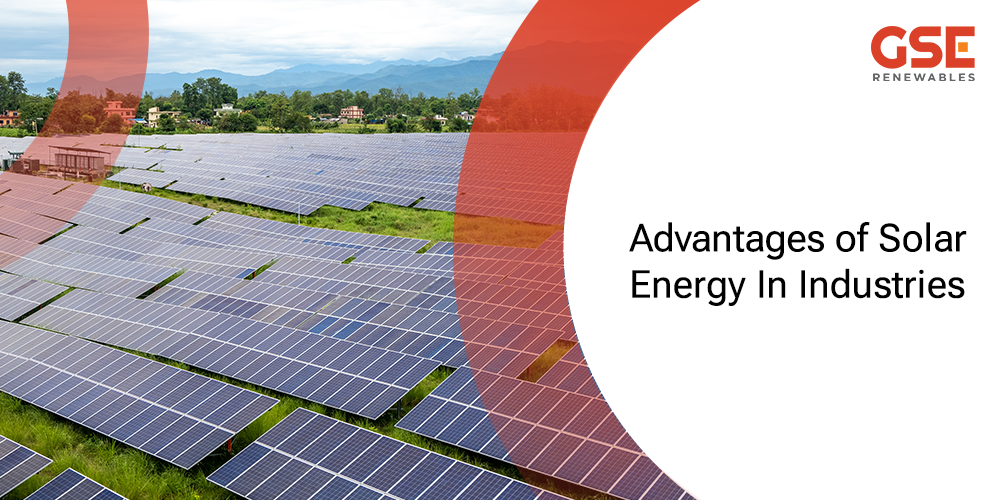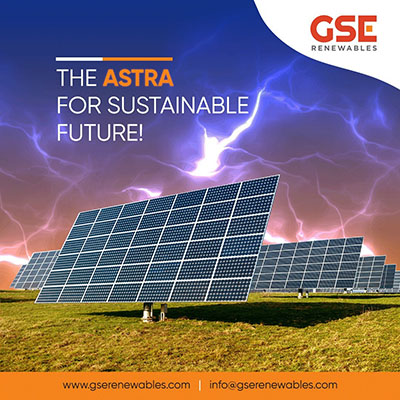500 kW Solar Power Plant Cost in Gujarat: Complete Price & Savings Guide
Nov 26

As industries continue to face rising energy costs & environmental challenges, more businesses are looking for industrial solar installation to cut operational costs, reduce carbon emissions & obtain maximum energy output.
Industrial solar panels offer large scale energy generation by using idle rooftop or ground mounted space within factories, warehouses & manufacturing units. These systems help industries lock in long-term electricity savings, making them a smart financial & environmental investment.
In 2025, more industries than ever are embracing industrial solar panel installation as a reliable & efficient way to power their operations. From agriculture & textile to steel & cement, businesses across sectors are switching to clean energy. Solar systems for industrial use are used for reducing energy costs, achieving sustainability goals & future-proofing operations.
GSE Renewable Energy is one of the leading industrial solar companies in India, specializing in delivering customized solar power solutions that align with your business needs. To reduce electricity bills & improve power reliability many businesses that adopt solar power systems will lead the way in a sustainable economy. Our expert guidance will ensure that solar systems comply with local regulations & safety standards while maximizing performance and ROI.
Whether you’re starting small or aiming for a full-scale transition, investing in a solar system for industrial use is a smart, strategic move. Contacting GSE Renewable Energy to get started on your journey toward clean energy and a greener future.
Several major industries are now adopting industrial solar installation to cut operational costs & enhance energy efficiency. Sectors such as agriculture, textile, cement, paper, steel, chemical, dairy & ceramic are leading the shift toward solar power. These industries benefit greatly from solar systems which help to lower electricity bills while providing a reliable & eco-friendly energy source.
Discover how industrial solar panel installation can cut energy costs, offer tax incentives, and boost long-term savings for your business.
Learn more about the benefits to boost efficiency and cut costs with industrial solar installation—enjoy reliable power, lower maintenance, and energy independence for your business.
Choosing the right industrial solar panel installation can be a smart move for any business aiming to cut energy costs & boost sustainability. Contacting trusted industrial solar companies ensures you get tailored solutions that fit your unique energy needs. They will guide you through industrial solar panel installation steps to deliver maximum performance & long-term savings.
With the growing demand for clean energy, commercial & industrial solar companies like GSE Renewables provide expert services that help businesses reduce their carbon footprint while enhancing energy independence. Take the leap toward a greener, more cost-effective future with professional solar solutions designed for industry. Contact a leading industrial solar installation company today and start powering your operations with clean, renewable energy.
Monocrystalline panels are ideal for industrial solar installations because of their high efficiency & compact design to generate more energy in limited roof space.
An industrial solar panel is designed specifically for large scale energy generation. These panels typically have higher energy outputs to meet the demands of business.
They are available with wattage ratings between 250 & 500 W. The exact wattage depends on the panel size & technology selected by industrial solar companies to meet the facility energy needs.
Industrial solar panels generally last 25 to 30 years. They can consistently perform throughout longer periods, ensuring long-term investment & energy savings.
The ROI for industrial solar installation varies based on system size, energy consumption & available incentives. An experienced industrial solar company can expect to recoup their investment within 4 to 7 years, followed by years of significantly reduced energy costs and increased sustainability.
